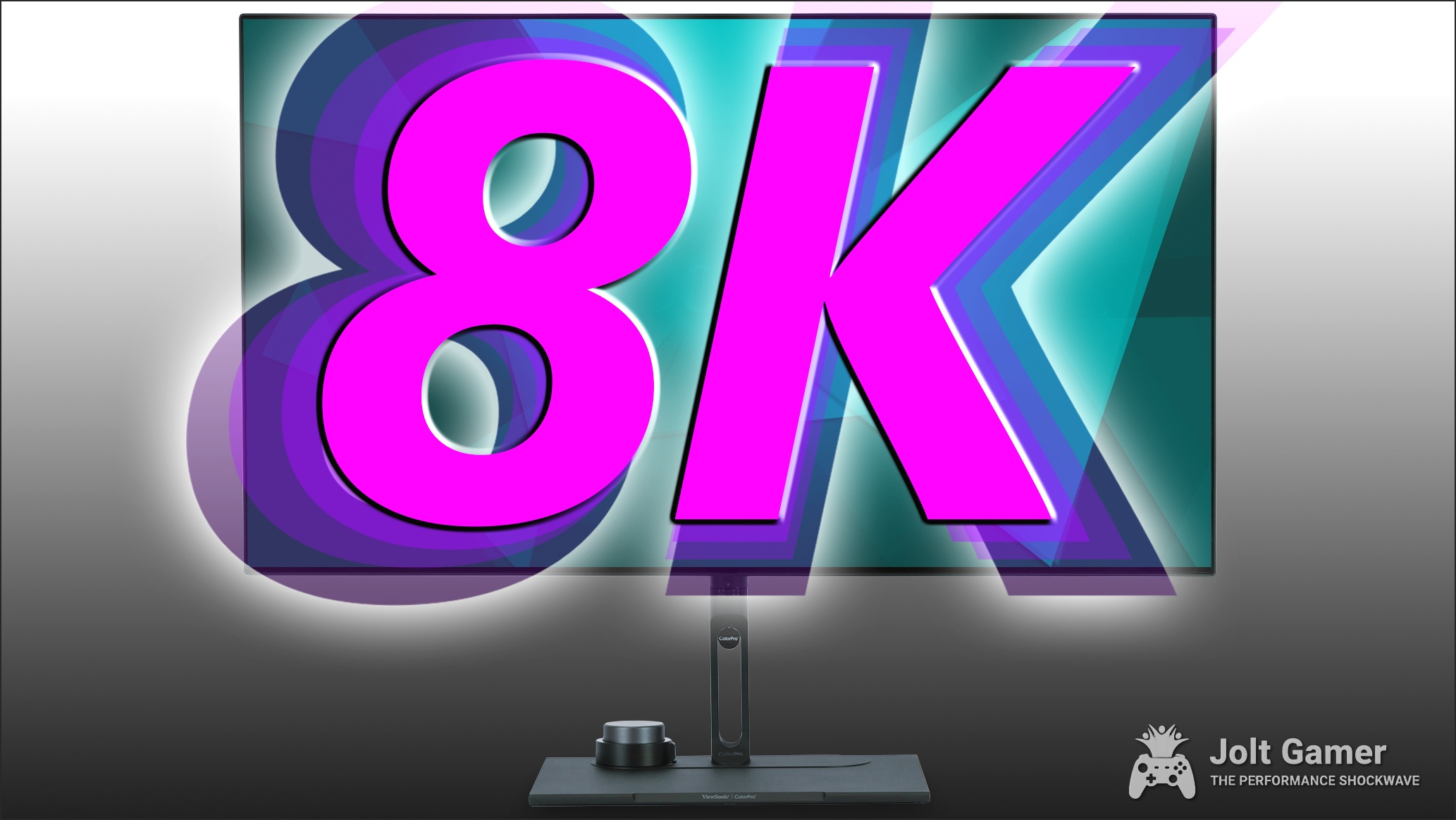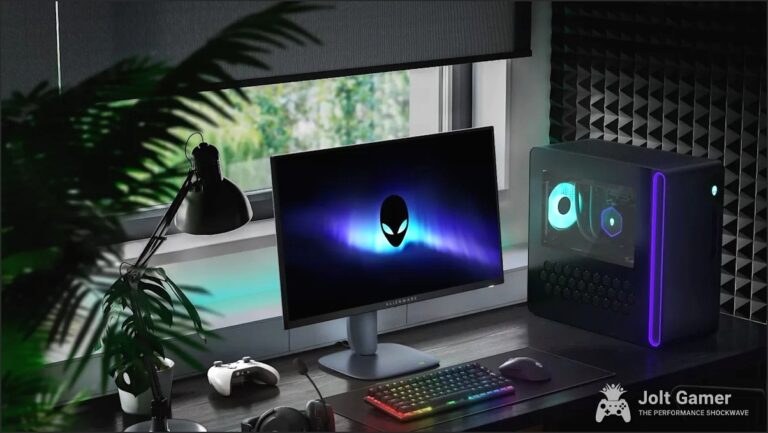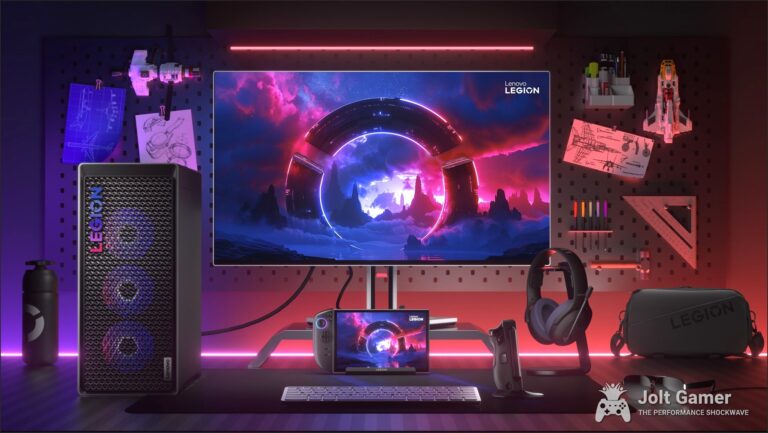OLED vs. IPS, 240Hz vs. 500Hz: Your Definitive Guide to Choosing the Ultimate Gaming Monitor in 2025
The gaming monitor market in 2025 is a vibrant, often overwhelming landscape, characterized by relentless innovation. Panel technologies are advancing at a blistering pace, refresh rates are soaring to unprecedented levels, and resolutions are pushing the boundaries of visual fidelity. For any serious gamer, navigating this dynamic environment to find the perfect display is both an exciting prospect and a significant challenge. This article cuts through the noise, offering a definitive, data-driven guide to help you make an informed choice for your ultimate gaming setup.
Key Takeaways
- OLED is rapidly becoming the gold standard for gaming due to superior blacks, contrast, and response times, but burn-in remains a cautious consideration.
- High refresh rates (240Hz, 500Hz) are crucial for competitive play, with 1440p hitting a sweet spot for performance and visual fidelity.
- Ultrawide and 32:9 monitors offer unparalleled immersion, especially with new dual 4K resolutions like Samsung’s Odyssey Neo G9.
- Budget-friendly 240Hz options (e.g., AOC C27G2ZU) are democratizing high-performance gaming, offering excellent value.
- 8K monitors are still largely impractical for gaming in 2025 due to hardware demands and content scarcity.
The OLED Revolution: Is It Time to Upgrade?
OLED technology has unequivocally emerged as the frontrunner in display innovation, and for good reason. Unlike traditional LCDs that rely on a backlight, OLED (Organic Light-Emitting Diode) panels feature an emissive architecture where each pixel generates its own light. This fundamental difference unlocks true blacks and infinite contrast ratios, as individual pixels can simply turn off, creating unparalleled depth and detail in dark scenes. Coupled with lightning-fast response times, typically in the realm of 0.03ms Grey-to-Grey, OLED virtually eliminates motion blur, delivering crisp, fluid visuals even in the most frantic competitive titles. The gaming community’s excitement is palpable; the immersive experience offered by OLED, with its vibrant colors and precise light control, transforms every game into a visual spectacle, and with increasing production, these once-premium displays are becoming more accessible.
OLED Gaming Monitors
Pros
- True Blacks & Infinite Contrast: Each pixel emits its own light, allowing for perfect blacks and unparalleled contrast ratios.
- Ultra-Fast Response Times: Typically 0.03ms GtG, virtually eliminating motion blur for crisp visuals in fast-paced games.
- Vibrant Colors & Wide Gamut: Exceptional color accuracy and saturation, especially with QD-OLED variants.
- Wide Viewing Angles: Consistent image quality from almost any angle.
- Enhanced Immersion: The combination of deep blacks and vivid colors creates a highly immersive gaming experience.
Cons
- Potential for Image Retention/Burn-in: A lingering concern, though manufacturers like Samsung (OLED Safeguard+) and MSI (OLED Care 2.0) are implementing advanced mitigation technologies and offering burn-in warranties.
- Higher Price Point: Generally more expensive than comparable IPS or VA panels, though prices are decreasing.
- Brightness Limitations (Full Screen): While peak brightness for HDR highlights is high, full-screen white brightness can be lower than some LCDs, potentially affecting productivity tasks.
- Sub-pixel Layouts: Some OLED panels use non-standard sub-pixel layouts that can cause minor text fringing for productivity users, though less noticeable in gaming.

Panel Showdown: OLED, IPS, and VA Explained
While OLED dominates the high-end discussion, IPS (In-Plane Switching) and VA (Vertical Alignment) panels remain prevalent and offer distinct characteristics. IPS panels are renowned for their excellent color accuracy and wide viewing angles, making them a favorite for professional work and competitive gaming where consistent visuals are paramount. However, they traditionally struggle with contrast, often exhibiting ‘IPS glow’ in dark environments. VA panels, conversely, excel in contrast, delivering deeper blacks than IPS due to their vertical alignment of liquid crystals. This makes them great for immersive single-player experiences, but their slower response times can lead to noticeable ghosting or black smearing, which is detrimental in fast-paced games. Understanding these core differences is crucial before diving into the specifics.
Gaming Monitor Panel Technologies: A Head-to-Head
| Feature | OLED | IPS | VA |
|---|---|---|---|
| Contrast Ratio | Infinite (True Blacks) | Good (Typically 1000:1 – 1300:1) | Excellent (Typically 2500:1 – 5000:1) |
| Response Time (GtG) | Extremely Fast (0.03 – 0.1ms) | Very Fast (1-4ms) | Moderate (4-8ms, can have ghosting) |
| Color Accuracy | Excellent (Wide Gamut) | Excellent (Wide Gamut) | Good (Can vary) |
| Viewing Angles | Excellent (No color shift) | Excellent (Minimal color shift) | Good (Color/contrast shift at extreme angles) |
| Motion Clarity | Superior (No ghosting) | Excellent | Good (Prone to black smearing/ghosting) |
| Burn-in Risk | Low to Moderate (Mitigated by tech/warranty) | Very Low | Very Low |
| Ideal Use Case | High-end gaming, content creation, immersive media | Competitive gaming, professional work, general use | Immersive single-player, media consumption (where ghosting isn’t critical) |
“Don’t buy VA for competitive gaming, go for IPS with highest Hz you can afford, the next best option is 2K OLED”
Refresh Rate & Resolution: Finding Your Sweet Spot
Beyond panel type, refresh rate and resolution are the cornerstones of a truly exceptional gaming experience. Refresh rate, measured in Hertz (Hz), dictates how many times your screen updates per second. A higher refresh rate translates directly to smoother gameplay and enhanced responsiveness, a critical advantage in competitive titles. While 144Hz remains a solid baseline, 240Hz is now mainstream for esports, and bleeding-edge 500Hz options are emerging for the most demanding players. Resolution, on the other hand, determines visual fidelity; more pixels mean sharper images and finer detail. 1080p (Full HD) is still common, but 1440p (QHD) has become the sweet spot, offering a significant visual upgrade over 1080p without the extreme GPU demands of 4K (UHD). The community’s desire for the perfect balance often leads to a compromise between these factors, influenced heavily by their hardware capabilities.
- GPU Power: Higher resolutions (1440p, 4K) and refresh rates (240Hz+) demand powerful graphics cards. Ensure your GPU can drive your desired setup.
- Game Genre: Competitive esports titles benefit most from high refresh rates (240Hz+), while graphically intensive single-player games can prioritize resolution (1440p, 4K) for immersion.
- Screen Size: 1080p is best suited for 24-inch monitors; 1440p shines on 27-inch to 32-inch displays; 4K and beyond are ideal for 32-inch and larger to maintain pixel density.
- Future-Proofing: Investing in a monitor with DisplayPort 2.1 or HDMI 2.1 ensures compatibility with next-gen GPUs and consoles.
Beyond the Basics: Aspect Ratios, HDR, and Connectivity
The modern gaming monitor offers more than just core panel tech. Aspect ratio significantly influences immersion, with ultrawide (21:9) and super-ultrawide (32:9) displays delivering expansive fields of view, particularly compelling in titles that support them. Models like the Samsung Odyssey Neo G9, with its dual 4K resolution (7680×2160) and intense 1000R curvature, epitomize this trend, offering an experience equivalent to two high-resolution monitors seamlessly stitched together. High Dynamic Range (HDR) support, validated by standards like VESA DisplayHDR 1000 or True Black 500, brings unparalleled contrast and vibrant colors to compatible content. Finally, robust connectivity is non-negotiable. DisplayPort 2.1 and HDMI 2.1 are essential for high-bandwidth requirements, enabling uncompressed high-resolution, high-refresh-rate signals, and ensuring compatibility with the latest GPUs and consoles.

Next-Gen Monitor Highlights (2025)
Samsung Odyssey Neo G9 (G95NC)
- Panel Type
- Quantum Mini LED
- Screen Size
- 57-inch
- Resolution
- 7680×2160 (Dual UHD)
- Aspect Ratio
- 32:9
- Curvature
- 1000R
- Refresh Rate
- 240Hz
- Response Time
- N/A (Implicitly fast)
- HDR Certification
- VESA Display HDR 1000
- Connectivity
- DisplayPort 2.1 (World’s first), HDMI 2.1
- Key Features
- Matte Display, Quantum Mini LED, Dual UHD
MSI MPG 272QR QD-OLED X50
- Panel Type
- QD-OLED
- Screen Size
- 26.5-inch
- Resolution
- 2560x1440p (QHD)
- Aspect Ratio
- 16:9
- Curvature
- Flat
- Refresh Rate
- 500Hz
- Response Time
- 0.03ms (GtG)
- HDR Certification
- VESA DisplayHDR True Black 500 (1000 cd/m² peak)
- Connectivity
- DisplayPort 2.1 (UHBR20), HDMI 2.1 (x2), USB-C (98W PD)
- Key Features
- OLED Care 2.0, Graphene heatsink, 3-year burn-in warranty, KVM
Featured Monitors: Our Top Picks & Value Propositions
While the high-end pushes boundaries, value remains a critical factor for many gamers. The AOC C27G2ZU stands out as an excellent value proposition for competitive 1080p gaming at 240Hz. This 27-inch curved VA panel delivers a 240Hz refresh rate, ensuring fluid motion clarity in fast-paced titles, and crucially, it includes AMD FreeSync Premium with Low Frame Rate Compensation (LFC) for tear-free gameplay across a wide FPS range. Unlike some competitors, it boasts a height-adjustable stand and a comprehensive USB hub, offering superior ergonomics and connectivity compared to similarly priced monitors like Dell’s Alienware AW2521HFL or Samsung’s CRG5, which often compromise on adjustability or port selection. Its impressive sRGB coverage and high contrast ratio out of the box further solidify its position as a top contender for budget-conscious gamers seeking high performance.
Value 240Hz 1080p Gaming Monitors (circa 2025)
| Model | AOC C27G2ZU | Dell Alienware AW2521HFL (25-inch) | Samsung CRG5 (27-inch) |
|---|---|---|---|
| Screen Size | 27-inch | 25-inch | 27-inch |
| Resolution | 1920×1080 | 1920×1080 | 1920×1080 |
| Panel Type | Curved VA | IPS | Curved VA |
| Refresh Rate | 240Hz | 240Hz | 240Hz |
| Adaptive Sync | AMD FreeSync Premium | AMD FreeSync Premium (G-Sync Compatible) | AMD FreeSync |
| Stand Adjustability | Height-adjustable | Height-adjustable | Tilt only |
| USB Hub | 4x USB 3.2 (Gen 1) | Yes | 1x USB |
| Estimated Price (GBP) | £300 | £330 | £298 |
AOC C27G2ZU
Price Range: £300 (US pricing TBD)
Release Date: Available now
Where to Buy:
- Major electronics retailers
- Online PC hardware stores
Key Features:
- 27-inch, 1920×1080, 240Hz curved VA panel
- AMD FreeSync Premium with LFC
- Height-adjustable stand & comprehensive USB hub
- Excellent sRGB coverage and contrast ratio
For those with a more flexible budget seeking the ultimate balance, the MSI MPG 272QR QD-OLED X50 represents a premium QHD (1440p) OLED option. Its 26.5-inch QD-OLED panel combines a blistering 500Hz refresh rate with an almost instantaneous 0.03ms response time, delivering unparalleled motion clarity and visual fidelity. This monitor is the embodiment of cutting-edge performance. However, it’s crucial to address the 8K monitor market, which, despite impressive strides in TV technology, remains largely impractical for mainstream gaming in 2025. The Dell UP3218K, while technically an 8K monitor, highlights the extreme niche status of these displays. Driving 7680×4320 pixels requires immense GPU power, often necessitating dual DisplayPort connections, and native 8K content is scarce. For the vast majority of gamers, 4K offers ample pixel density and is far more practical and affordable, making 8K a future-proof curiosity rather than a current recommendation for a primary gaming display.
Optimizing Your Display: FreeSync, G-Sync, and Beyond
Once you’ve selected your hardware, optimizing your display’s performance is the next critical step. Adaptive Sync technologies, primarily AMD FreeSync and NVIDIA G-Sync (including G-Sync Compatible), are indispensable for a smooth, tear-free gaming experience. These technologies dynamically synchronize your monitor’s refresh rate with your GPU’s frame rate, effectively eliminating screen tearing and reducing stuttering. This ensures that every frame is displayed perfectly, regardless of fluctuations in your game’s performance, providing a consistently fluid visual output that is crucial for both immersion and competitive edge.
Pro Tip: Expand Your FreeSync Range with CRU!
For advanced users, the Custom Resolution Utility (CRU) can sometimes unlock a wider FreeSync/VRR range than officially advertised, leading to even smoother gameplay at lower framerates. However, proceed with caution: not all monitors support an expanded range, and incorrect settings can cause display issues. Always back up your settings and be prepared to revert if necessary (pressing F8 typically resets display settings if your screen goes blank).
How to Adjust FreeSync Range Using CRU
- Download CRU: Obtain the Custom Resolution Utility from its official forum post and unpack the files.
- Run CRU.exe: Launch the application and select your active monitor (marked with ‘(active)’) from the dropdown menu.
- Edit Display Properties (DisplayPort): For DisplayPort connections, click ‘Edit’ next to your monitor’s model name. Under ‘Range limits’, enter your desired ‘V rate’ (e.g., ’30-75′ for 30Hz-75Hz) and confirm with ‘OK’ in all open windows.
- Edit Extension Block (HDMI): For HDMI connections, navigate to the ‘Extension Block’ window. Select ‘FreeSync range’, click ‘Edit’, type in your desired range, and confirm with ‘OK’ in all three open windows.
- Apply Changes: Run
restart64.exe(orrestart.exe) from the CRU folder. Your screen will go blank momentarily as the graphics driver resets with the new settings. If the display doesn’t recover within 15 seconds, press ‘F8’ to revert.
Your Top Gaming Monitor Questions Answered
Is OLED burn-in still a major concern for gaming monitors?
While the risk exists, modern OLED monitors from manufacturers like Samsung and MSI incorporate advanced burn-in prevention technologies (pixel shifting, taskbar detection, graphene heatsinks) and often come with multi-year warranties that cover burn-in. For typical varied gaming and desktop use, the risk is significantly reduced compared to early OLED tech. However, prolonged static elements at high brightness should still be managed.
Which panel type is best for competitive FPS gaming?
For competitive FPS, ultra-fast response times and high refresh rates are paramount. OLED panels now offer the absolute fastest response times (0.03-0.1ms), making them a top choice. High-end IPS panels are also excellent, offering 1-4ms response times with good motion clarity. VA panels, while offering great contrast, can suffer from black smearing or ghosting, which is detrimental in fast-paced competitive titles.
Should I prioritize resolution or refresh rate?
This depends on your games and hardware. For competitive multiplayer, prioritize refresh rate (240Hz+) for responsiveness. For immersive single-player games, prioritize resolution (1440p, 4K) for visual fidelity. If your GPU can handle it, aim for a balance, like 1440p at 240Hz, which many consider the current sweet spot.
What’s the deal with 8K gaming monitors?
As of 2025, 8K gaming monitors like the Dell UP3218K are extremely niche. They require immense GPU power (often dual DisplayPort connections) and native 8K content is scarce. For most gamers, 4K offers ample pixel density and is far more practical and affordable, making 8K a future-proof curiosity rather than a current recommendation.
What is DisplayPort 2.1 and why does it matter?
DisplayPort 2.1 is the latest standard, significantly increasing data transfer speeds compared to DisplayPort 1.4. This extra bandwidth is crucial for driving extremely high resolutions (like dual 4K on a single monitor) and ultra-high refresh rates (like 500Hz) without compression, ensuring distortion-free image transmission and future compatibility with next-gen hardware.
The Future is Bright (and Fast): Making Your Monitor Choice
The gaming monitor market in 2025 offers an unprecedented array of choices, with OLED technology leading the charge in visual fidelity and speed. While concerns like burn-in are being actively mitigated, the immersive experience and competitive edge offered by OLED are undeniable. For most gamers, the sweet spot lies in high refresh rate (144Hz-240Hz) 1440p displays, offering a fantastic balance of performance and visual quality. Value-oriented 1080p 240Hz monitors provide excellent entry points, while enthusiasts can push the boundaries with 500Hz QHD OLEDs or expansive 32:9 ultrawides. 8K remains a distant dream for practical gaming. Ultimately, the best monitor for you will depend on your budget, your GPU’s power, and your preferred game genres. But with this definitive analysis, you’re now equipped to make an informed decision that will elevate your gaming experience.






Who knew choosing a monitor was like picking a supercar? Do I go for the explosive contrast and instant speed of OLED, risk a tiny image ghost in my peripheral vision with VA, or stick with the reliable IPS workhorse? And dont get me started on the refresh rate arms race – 240Hz is the new baseline, apparently, or you might as well be playing with slides! The article covers it all, but honestly, after reading about 32:9 ultrawide setups and DisplayPort 2.1 bandwidth battles, I just want a monitor that doesnt require a second mortgage and doesnt make my eyes cross. Just give me a 27-inch 1440p with a decent stand and a warranty longer than my attention span, please!